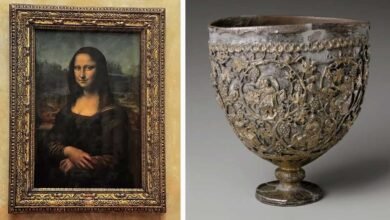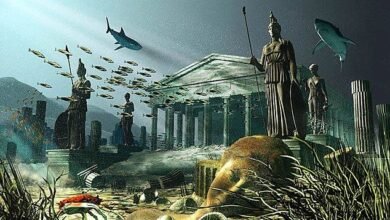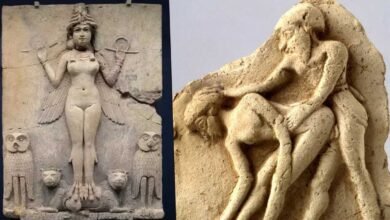Throughout history, maps have served as windows to the past, unlocking the mysteries of our world. The first European map of Tenochtitlan, crafted in 1524, stands as a testament to both the evolution of cartography and the convergence of two vastly different civilizations – the indigenous peoples of Mesoamerica and the European explorers.
The Fall of Tenochtitlan
In the year 1521, Hernán Cortés led Spanish conquistadors in toppling the mighty Aztec Empire, culminating in the fall of its capital, Tenochtitlan. Although the city was left in ruins, its intricate canals, temples, causeways, and marketplaces intrigued the Spanish.

Approximately 500 years ago, Spanish forces laid siege to the Aztec capital of Tenochtitlán. Public domain via Wikimedia Commons
Crafting the Map
To immortalize this magnificent city and its complex layout, an indigenous group of artists and scribes, well-versed in both Nahuatl and Spanish, were entrusted with the task. The resultant map merged European bird’s-eye view perspectives with indigenous symbols and color coding reminiscent of Aztec codices.

Friedrich Peypus, Nurenberg Map of Mexico City (Cortés map), 1524, hand-colored woodcut. Newberry Library, Chicago, Edward E. Ayer Digital Collection, Ayer 655.51 .C8 1524b. Image: Public domain via Wikimedia Commons
Unveiling the Aztec Capital
The map of Tenochtitlan provides a glimpse into the city’s grandeur. Divided into four zones, the city’s elaborate canal network – serving as water highways – is depicted. Landmarks such as the Templo Mayor and bustling Tlatelolco marketplace are meticulously detailed. The map also highlights the city’s connection to its environment, depicting causeways and aqueducts that brought freshwater from the mainland.

Tenochtitlan (Templo Mayor can be seen in the center) Image: Public domain via Wikimedia Commons
Tenochtitlan: The Venice of the New World
Founded in 1325 on an island in Lake Texcoco, Tenochtitlan swiftly became the capital of the Aztec Empire. With a population of 200,000 to 250,000 at its peak, it was a thriving city centered around ceremonial complexes, including the Templo Mayor. The city’s unique infrastructure featured canals, causeways, and marketplaces.

Gary Todd from Xinzheng, China – Painting of Tenochtitlan-Tlatelolco on Lake Texcoco Public domain via Wikimedia Commons





Aftermath and Impact
Sent to Charles V, the Holy Roman Emperor, the map played a pivotal role in shaping European perceptions of the New World. Beyond its practical application, it symbolized European dominance. The map embodied a cultural encounter, blending European and Aztec conventions, offering a nuanced glimpse into a pivotal historical moment.
The 1524 map of Tenochtitlan stands as a testament to the power of cartography to bridge cultures and epochs. It provides modern scholars and enthusiasts a tantalizing glimpse into the past, a tangible link between the rich legacy of Aztec civilization and the dawn of intercultural exchange in the New World. As we study its intricate details, we unearth layers of history and trace the footsteps of those who walked the shores of Lake Texcoco centuries ago.




